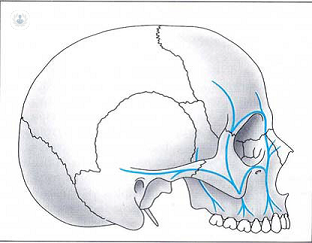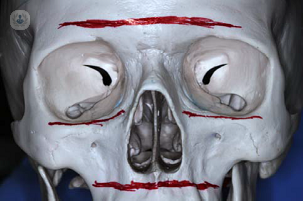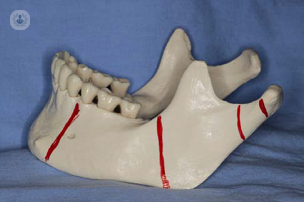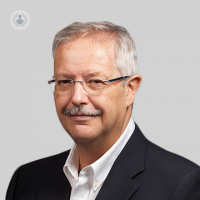Facial trauma: how to act when it occurs
Written by:The facial trauma occurs as fracture when an impact acts on the bone and can not absorb this. The most common causes are traffic accidents or assaults. It is very important to know how to treat them to ensure the vital functions and to repair the fracture.
Facial trauma is an injury suffered by the bone, soft tissue and organs and facial cavities existing before an impact (strength, energy), absorbing. The facial skeleton is able to withstand (absorb) this energy to some extent, according to experts in Oral and Maxillofacial Surgery. When this energy exceeds the absorption capacity, a consequence called fracture.
The impact acts on the bone by compression, tension, compression and rotation. In addition, facial trauma has a very important relationship to the deviation component of muscle fragments.
The facial injuries account for 30% of trauma patients, with a prevalence of male-female 3/1.
The most common causes of facial trauma are:- Traffic (60%)- Assaults (30%)- Sports (5%)- Labor (3%)- Other (2%)
Architecture of the facial bonesThe facial architecture consists of:1. resistant structures that reinforce the bony framework, called outriggers:a) Vertical / Pillars: Work transmitting forces up, and succumb to impacts of transverse or oblique direction. While withstand vertical impacts.

b) Horizontal / Beams: They are structures that protect against impacts anteroposterior. They are located at the level of the frontal bone, at the level of orbitomalar area and maxilla.

2. Fragile Structures. They are joining areas of different bones or different parts of the bone. For example, the jaw line: condyle angle mental foramen.

The facial skeleton are also attributed structures called Bumper:- A previous level: frontal bone, nose and chin- A lateral level: complex orbital-malar

Moreover, if we saw by bony facial trauma units, we would see that the jawbone is divided into:- Symphyseal / parasymphyseal Area (7)- Mandibular body (6)- Mandibular angle (4)- Ascending limb (3)- Coronoides (1)- Condyle (2)

The facial skeleton understands:- Frontal bone (1)- Nasal (5)- Orbital (2)- Zygomatic-malar (3)- Maxilla (4)

Symptoms of facial traumaHe is suspicious of the existence of facial fracture whenever there has been a trauma or when clinical, such signs as appreciate: bone deformity, facial asymmetry, collapse, abnormal mobility, hematoma, edema, swelling, tenderness and / or mobility or functional limitation.
Treatment of facial traumaThe treatment consists of three procedures:1. Ensuring vital functions:- Airway patency- Control of bleeding- Circulatory stabilization- Neurological assessment and associated pathologies2. Repair the fracture site:- Reduction fracture focus or foci, placing bone fragments separated in correct anatomical position- Absolute immobilization of the fracture: bone plate

3. Further pharmacology to prevent infection and to reduce inflammation and pain.
The recovery is given by the type of injury sustained, depending on whether it is mild, moderate or severe. Overall evolution is favorable, provided that appropriate conditions are met. Today the recovery is relatively short having no complications and / or sequelae, avoiding long hospital stays.


